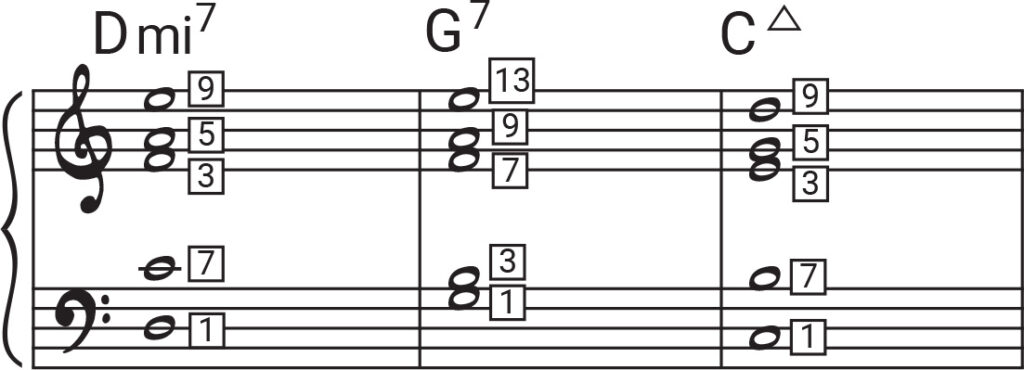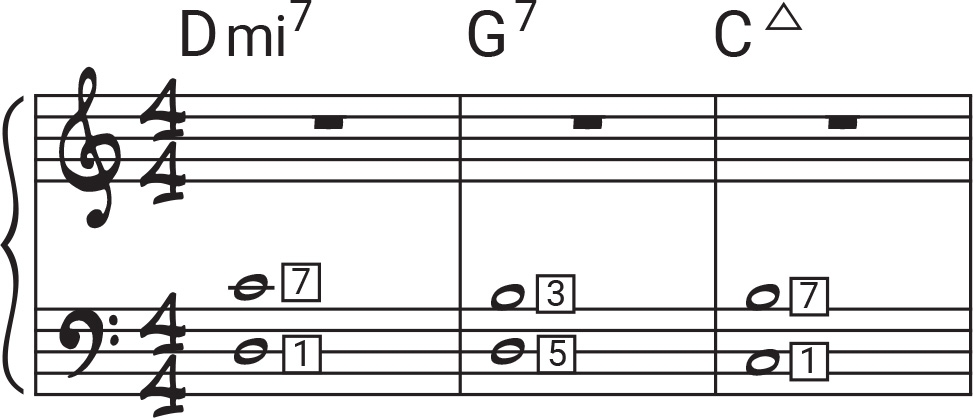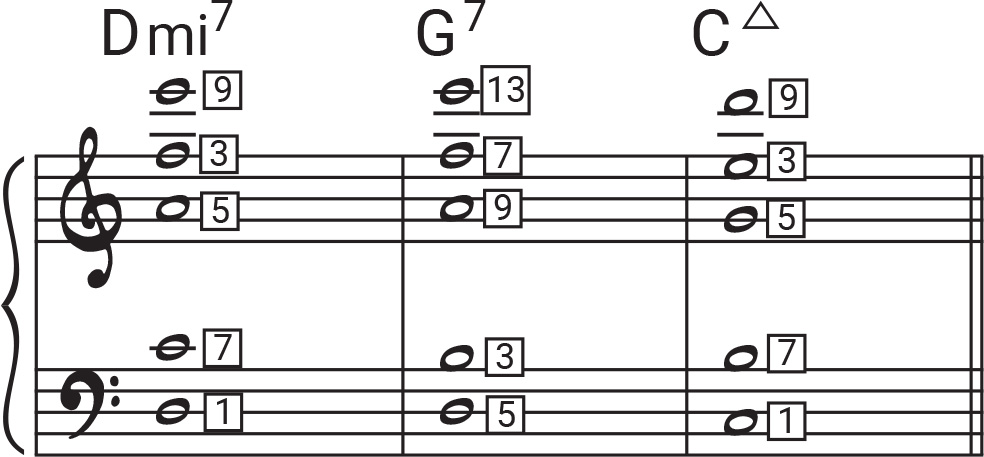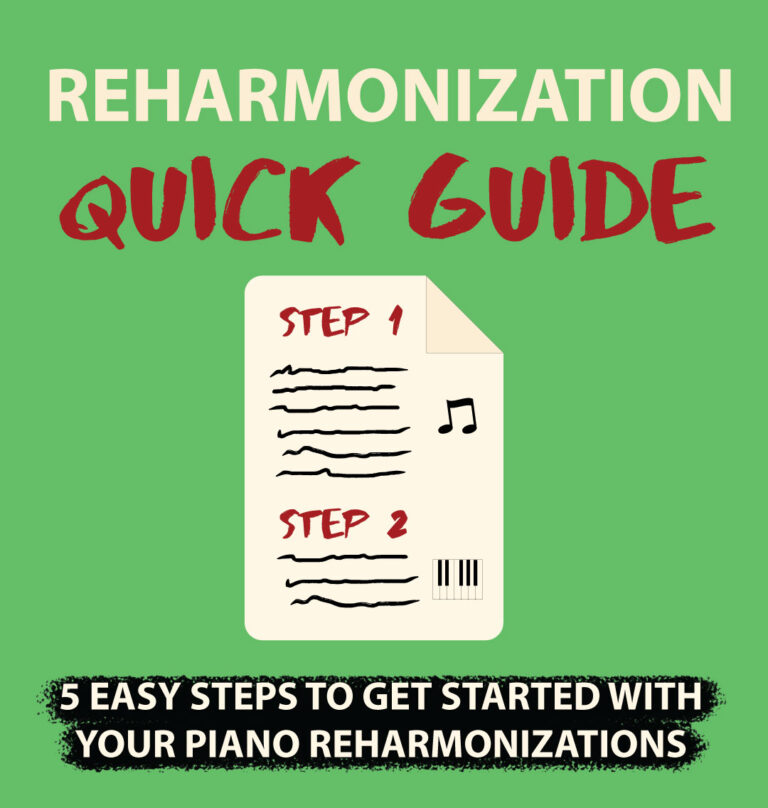In this exercise, we’re going to build superwide ii – V – I voicings. Think of this as a great tool to create moody textures, and spacious arpeggiated piano comping on ballads. These voicings are unconventional, but they have a unique sound and can open up many possibilities in your piano playing.
But first, let’s start with a basic way of playing a ii – V – I progression.
Basic ii - V - I
ii – V – I progressions are probably the most common chord progressions in jazz music. A typical way of playing these is using the following voicings:

These voicings are built conventionally, starting with the root, followed by the 7th or the 3rd, and then by the 5th or extensions like the 9th and the 13th.
There’s absolutely nothing wrong with this voicing, and if you’re not that familiar with it, I highly recommend practicing this one first!
As you can tell, the notes in these voicings are spread out moderately, the distance between them ranging from 3rds to at most a 7th. This means they’re taking up about two octaves, which is about how wide piano voicings normally are.
However, the piano has 88 keys, and wouldn’t it be interesting to use up more of its harmonic range? Let’s see what would happen if we’d try to use larger intervals, thereby widening our voicings.
Widening the voicings
Let’s start with the left hand:

I think the 7th interval is a good place to start on the ii-chord, Dm7. It’s a large interval and gives enough of a foundation to build upon. It could also work great just by itself (Thelonious Monk often uses this voicing in the left hand).
For the V-chord, instead of putting the root (G) in the bass, let’s keep the same note from the previous voicing. This way, we create good voice leading: the notes are not jumping around too much, and we end up with a major 6th rather than a 3rd.
Next, let’s try to add 6th or 7th intervals and see if they work with the chord:

On the ii-chord, Dm7, adding a 6th interval (to get the 5th), another 6th (to get the minor 3rd), and a 7th (to get the 9th) works great.
For the V-chord, G7, we can pretty much keep all the notes, which in turn become the 5th, 3rd, 9th, 7th, and 13th. Weirdly, the only chord-tone that’s missing, is the G, the root. However, I don’t miss it! There’s enough information there to tell you what chord it is.
On the I-chord, Cmaj7, we’re using the same shape as the ii-chord: root, 7th, 5th, 3rd, 9th.
Practice in all keys
The next step would be to practice this in all keys – see the video below:
Lastly, can you apply this to a jazz standard? Perhaps you could take a song like Autumn Leaves, and play the chords using these superwide voicings. This could be a great way to accompany a saxophonist or a vocalist on a ballad.
I hope you found this blog useful, and let me know what you think of this exercise in the comments below!
As always, if you haven’t yet, make sure to grab your free copy of the Reharmonization Quick Guide and receive free piano content in your inbox every few weeks.

